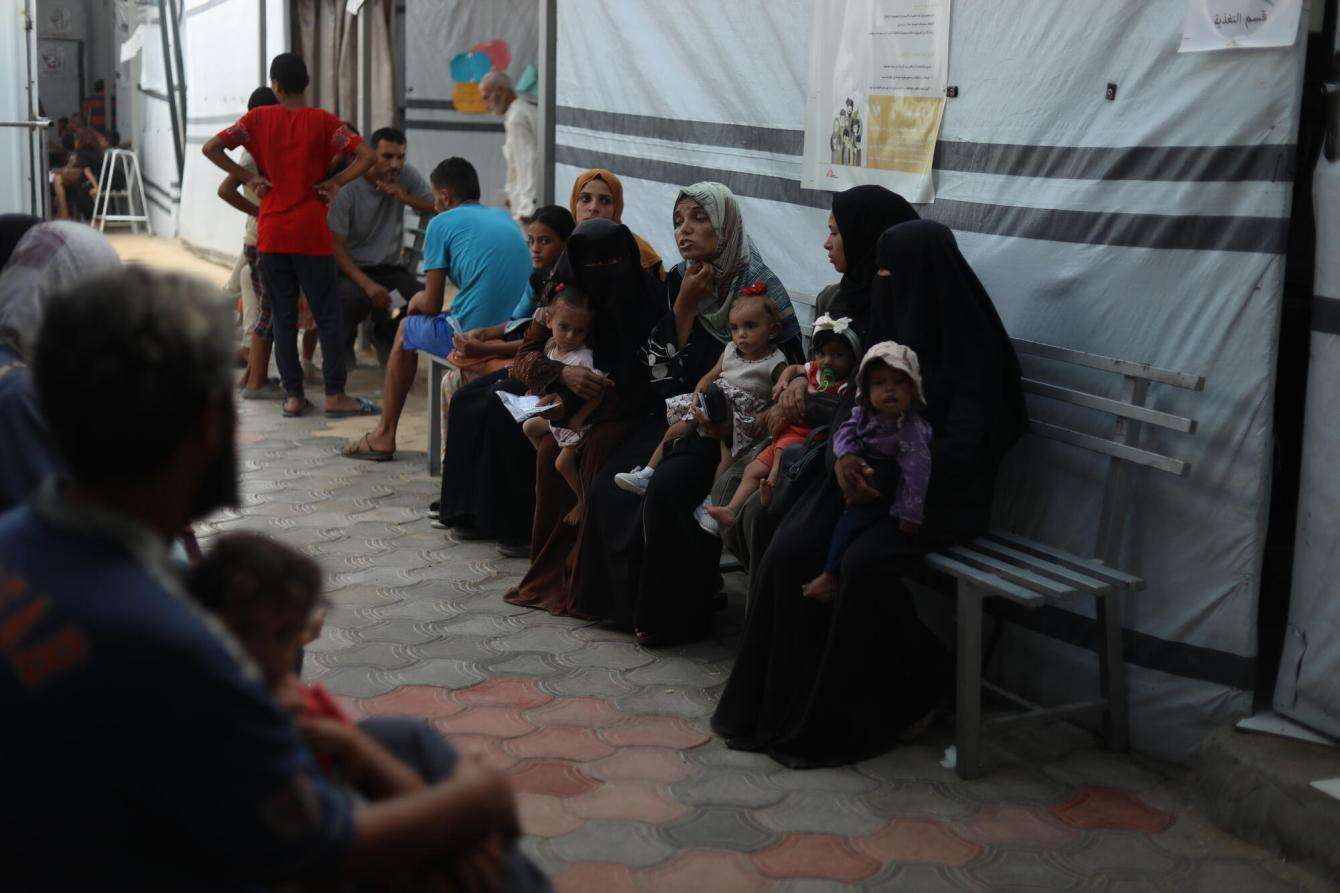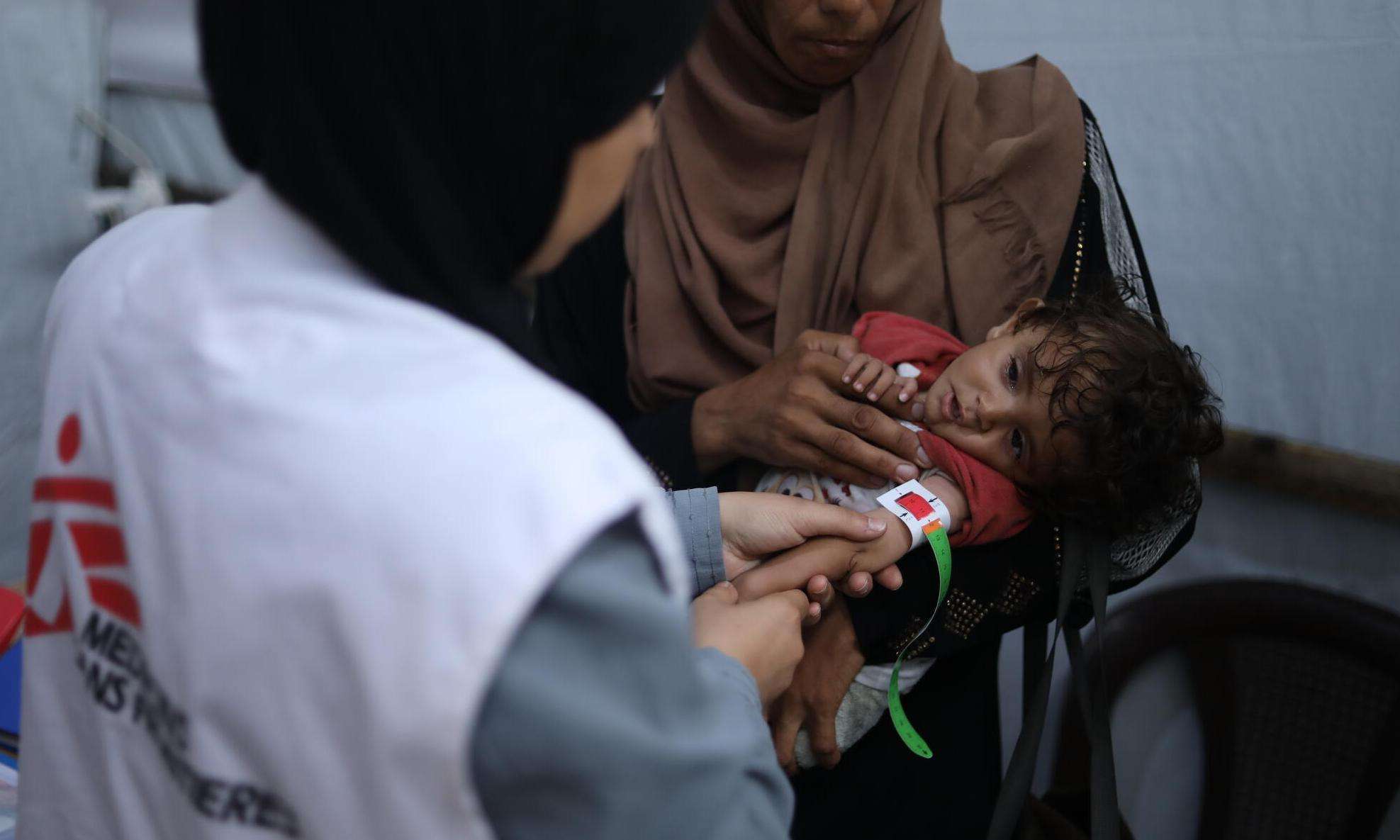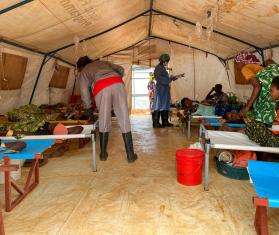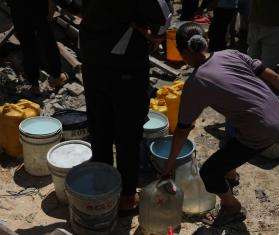This article was updated on August 22, 2025.
Starvation is underway in Gaza as a result of Israeli authorities’ deliberate weaponization of food. On August 22, the United Nations-coordinated Integrated Food Security Phase Classification (IPC) system officially declared famine in Gaza governorate, in the north of the Gaza Strip. Famine thresholds are expected to be crossed in Deir al-Balah and Khan Younis governorates by the end of September. In hospitals and clinics, both patients and staff are fighting to survive on what limited food is available, often going days at a time without eating.
Doctors Without Borders/Médecins Sans Frontières (MSF) teams have seen a steady and significant increase in patients with malnutrition coming to our clinics, in addition to those we’re seeing with wounds from gunshots, shrapnel, assaults, or stabbings. Here are some critical findings from our work in recent months.
The malnutrition detection and treatment activities described below focus on children aged 6 months to 5 years old, and pregnant and breastfeeding women, unless otherwise specified.
The starvation in Gaza is man-made.
What we are seeing in Gaza is a result of Israeli authorities’ use of food as a weapon of war.
Since March 2, when Israeli authorities imposed a total siege of the Strip—preventing the entry of all humanitarian trucks carrying food, fuel, and medical supplies—only a small number of humanitarian aid trucks have entered the Strip. Food supplies are extremely limited and what’s available is incredibly expensive and out of reach for many Gazans.
According to UN estimates, 80 percent of Gaza’s population already relied on external supplies before 2023, as the Strip has been under blockade since 2007.
MSF teams have seen a steady and significant increase in malnourished patients coming to our clinics since mid-June.
MSF teams are screening more than 1,000 people a week for malnutrition at our Gaza City and Khan Younis facilities, and are seeing a 20 percent rate of global acute malnutrition. This means that nearly 1 in 5 people we screen for malnutrition has either moderate or severe acute malnutrition. This far exceeds the emergency threshold of 15 percent, signaling severe food insecurity and a public health crisis underway in Gaza.
On July 29, the Integrated Food Security Phase Classification (IPC), the global standard for famine monitoring, confirmed that two famine thresholds—catastrophic food insecurity and acute malnutrition in children—have been met across much of Gaza, and that the situation is particularly severe in Gaza City.
Due to the security situation in Gaza, MSF is not able to conduct community-level screening. However, we screen people at our primary health care centers, and this data shows a rapid deterioration in food security.
As of August 9, 1,599 people are enrolled as outpatients for malnutrition care in MSF facilities in Gaza City—a total increase of 10 percent from the week prior. This number has increased five times since the end of May this year, illustrating the shocking and devastating impact of the food shortages in Gaza. Of these patients, 672 are children under 5 years old. Ninety percent of these children are between 6 and 23 months old, an age group particularly vulnerable to malnutrition. Childhood malnutrition can cause lifelong physical and cognitive damage, reducing learning capacity, productivity, and health. No amount of food aid can undo these consequences. These effects reverberate across generations, undermining the recovery and resilience of entire communities.
Over half of patients enrolled in our malnutrition program in Gaza City are pregnant and breastfeeding women. Malnutrition during pregnancy can increase the risks of complications such as premature delivery. At our Gaza City clinic, we saw a 21 percent increase in the number of babies aged 6 to 23 months old being treated for severe acute malnutrition just last week alone, compared to the previous week.
We are struggling to discharge patients without proper treatment and enough food, while the number of patients continues to grow.
By the numbers: Malnutrition in Gaza*
- Our teams are screening over 1,000 people a week at our clinics in Khan Younis and Gaza City, with a global acute malnutrition rate of 20 percent.
- Nearly 1 in 5 people screened at these clinics have moderate or severe acute malnutrition—far exceeding the emergency threshold of 15 percent.
- Of the 672 patients under five years old at the Gaza City clinic, 90 percent are between 6 and 23 months old—an age group especially vulnerable to malnutrition.
- Pregnant and breastfeeding women make up more than half of the patients enrolled in our Gaza City malnutrition program.
*These figures are from MSF’s activities at our Gaza City and Khan Younis clinics and do not reflect the full scale of the malnutrition crisis across the Strip.
Malnutrition is not just a food shortage—it’s a life-threatening medical condition.
Even if large-scale food supplies reach Gaza in the coming weeks, the crisis will persist. Immediate access to treatment—including therapeutic foods like Plumpy’Nut—will be essential to save lives.
The scale of our medical activities has been severely constrained by supply shortages due to Israeli authorities’ ongoing obstruction of aid. In North Gaza, challenges are compounded by the limited presence of humanitarian organizations, the difficulty of transporting therapeutic food to Gaza City, the destruction of health facilities, and a lack of viable physical structures to run health care services.
There are very few facilities available to manage severe complicated cases across all of Gaza. If malnutrition cases continue to increase, it will likely lead to more demand for inpatient care. There are currently about 15 beds in the south for inpatient treatment of malnutrition and 20 in Gaza city.
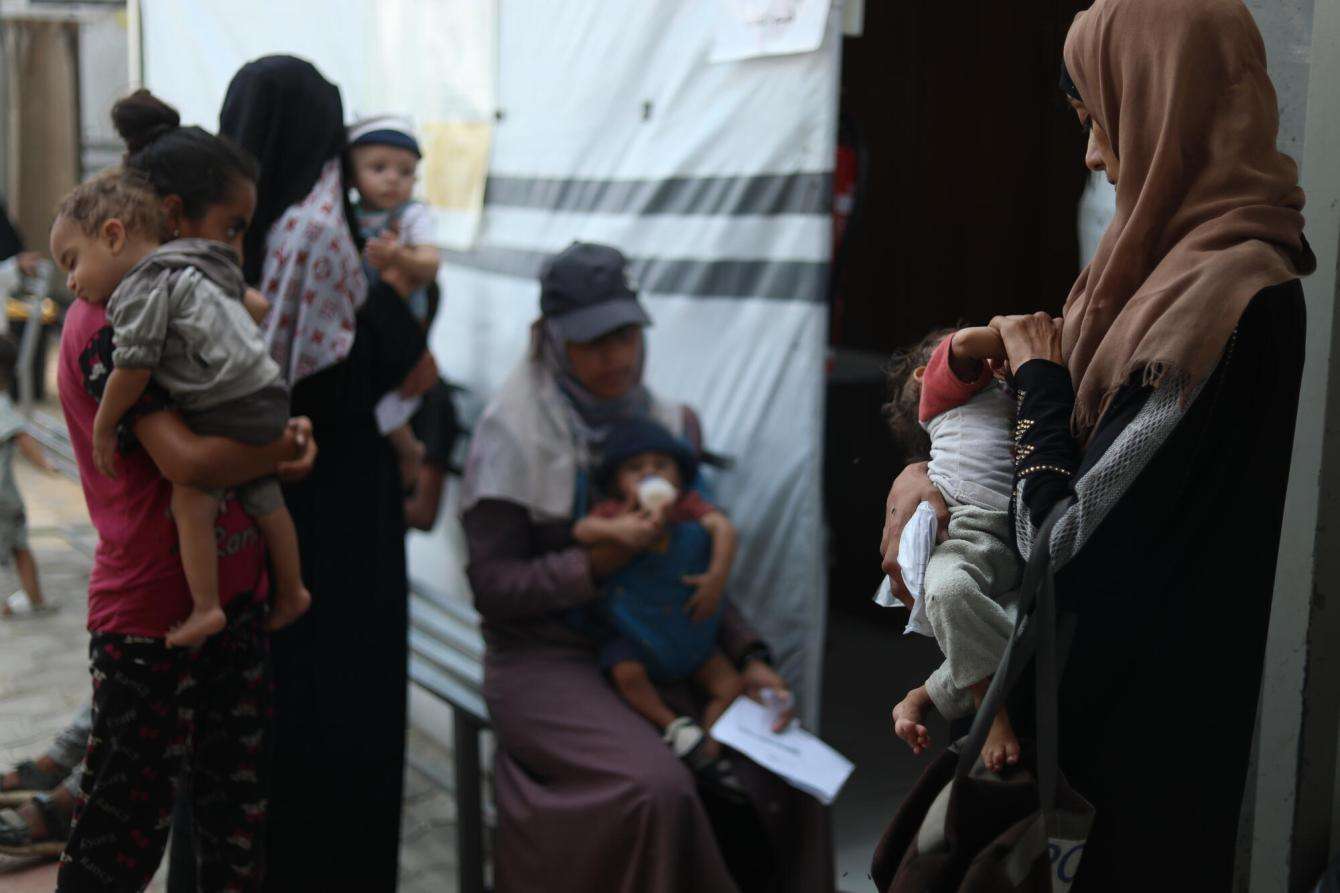
The food shortage we are witnessing in Gaza means we are not able to feed patients in hospitals, and our own staff are going days without food.
MSF staff have been forced to ration food and are often only able to eat one small meal a day.
Community kitchens that provide food for staff and patients have been struggling to consistently provide food at some of the facilities where we work. Even when food is available, it is extremely limited and lacks the range of nutrients necessary for patients to recover or heal.
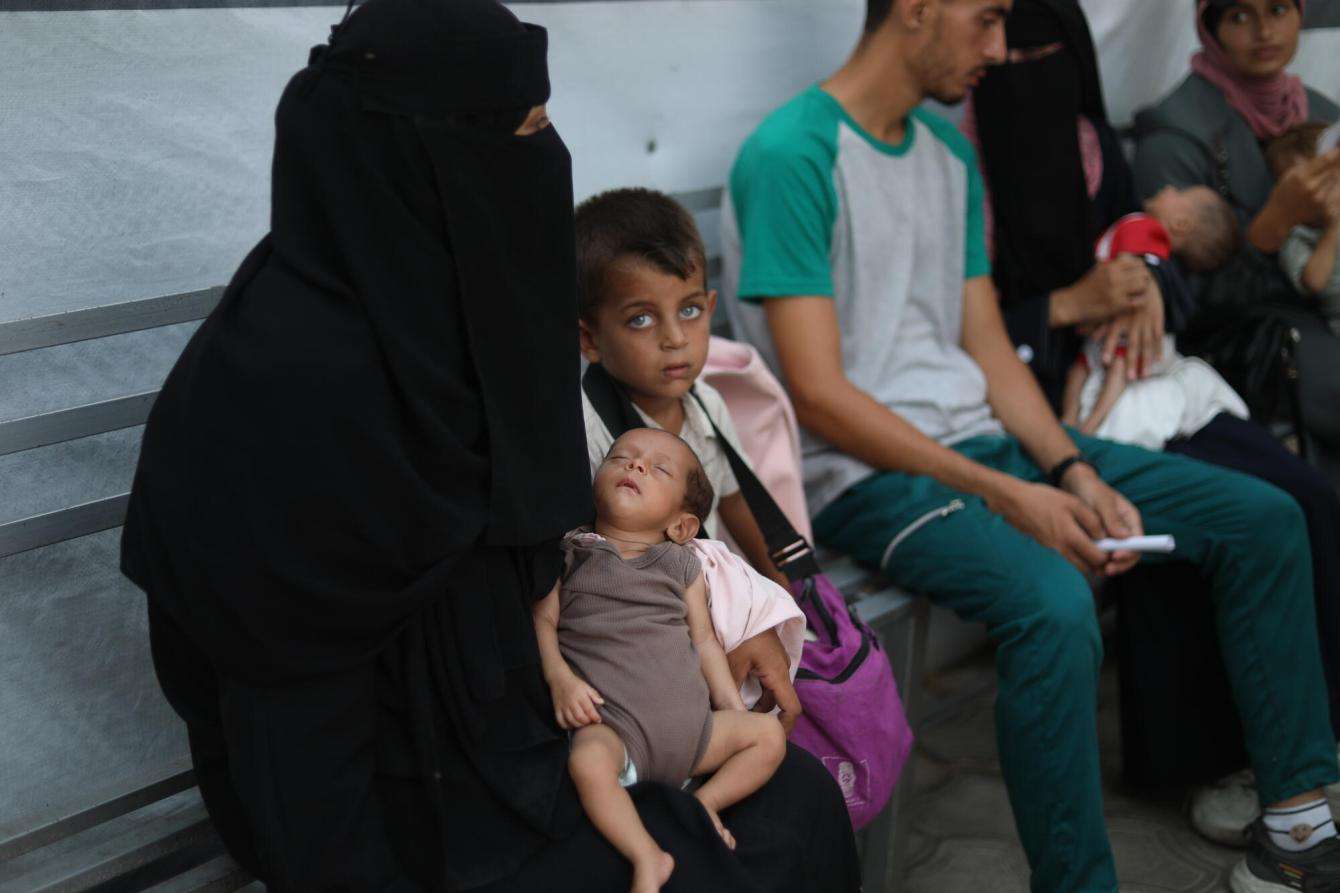
Since the start of the Gaza Humanitarian Fund aid scheme, we have witnessed frequent massacres as Israeli forces shoot desperate, hungry people at distribution sites.
People are risking their lives every day to get food, with near-daily massacres as trucks enter the Strip. One of our own colleagues was shot in one of these massacres. The starvation manufactured by the Israeli authorities, coupled with the tiny, inconsistent trickle of aid allowed into Gaza, has created chaos. On July 30, nearly 600 people were wounded and over 50 killed by shootings, crush injuries, and stabbings in the chaos.
At just two MSF clinics in the south of Gaza, Al-Mawasi and Al-Attar primary health care clinics, MSF teams received over 1,300 casualties, including 28 dead bodies, between June 7 and July 24. All but one of the dead were young men with gunshot wounds to the upper body.
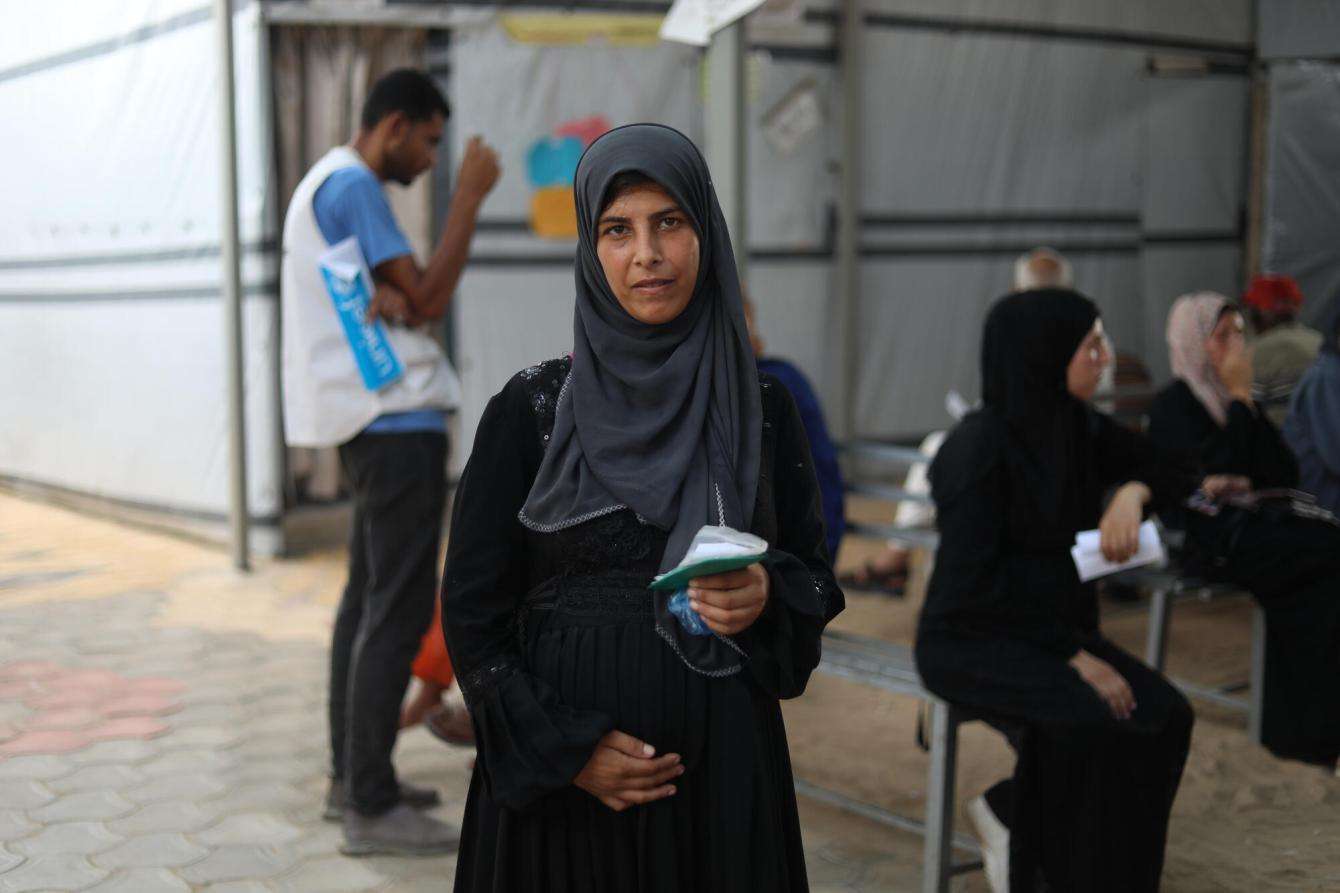
Malnutrition is affecting people’s ability to heal from traumatic injuries
Patients with trauma are currently receiving less than half the daily calories they need. Severe burns, for instance, require about 3,000 kilocalories per day to properly heal.
A lack of proper nutrition can result in severe medical complications including infection, delayed healing, and often amputation.
